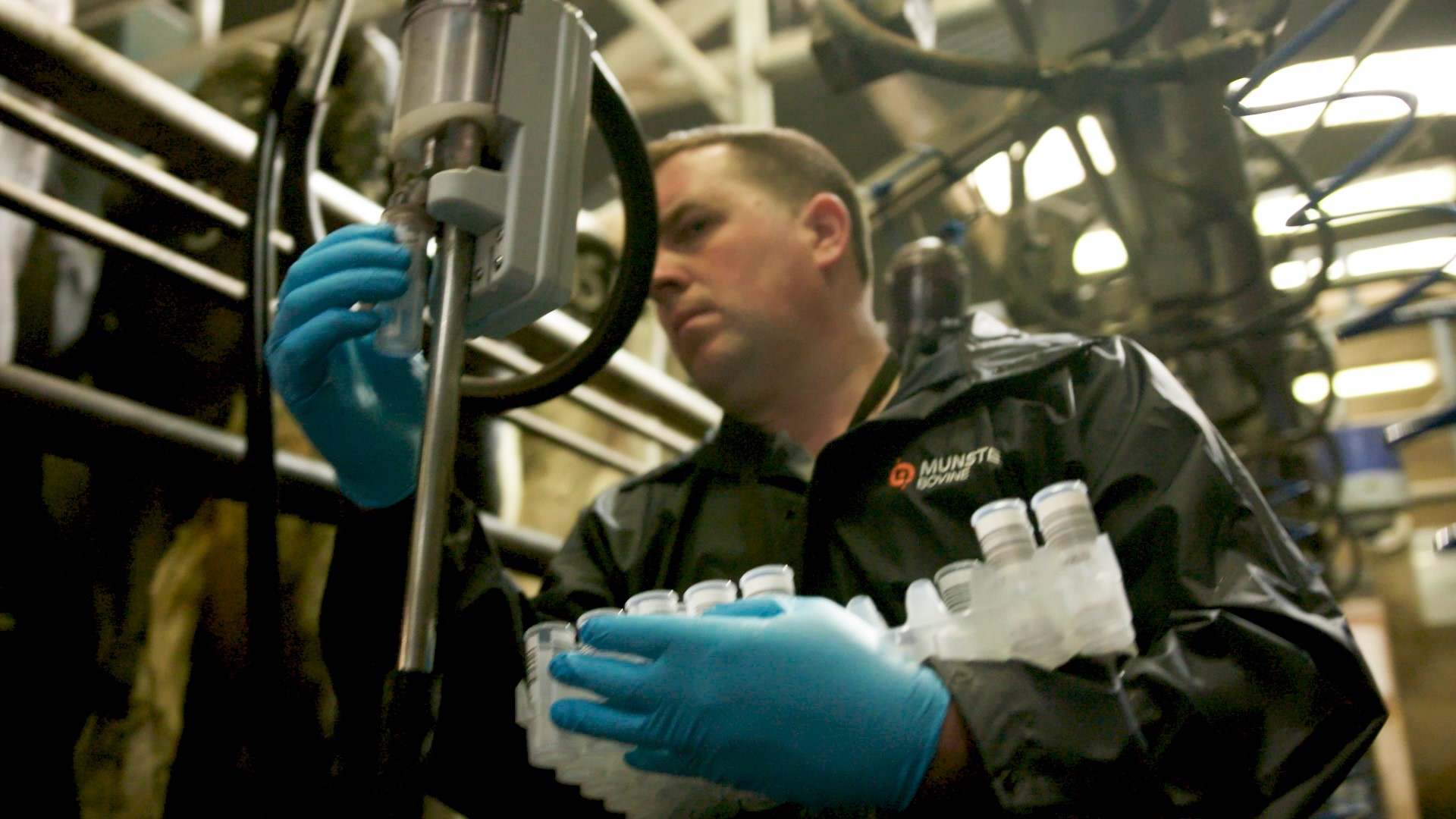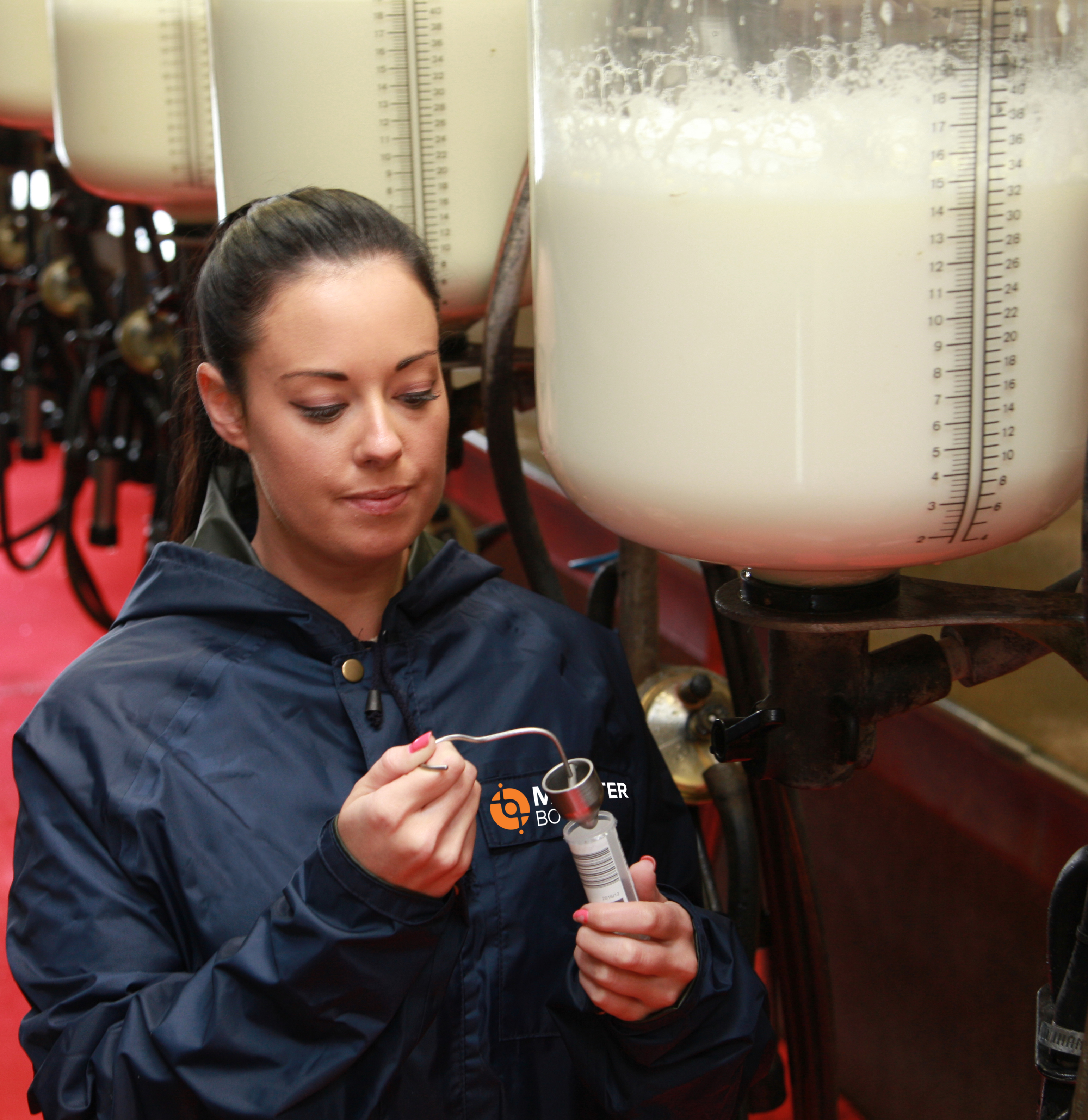
About the Manual Milk Recording process
If you have your own ICAR approved meters or jars, you can avail of the Munster Bovine manual milk recording services. This is where a Munster Bovine Milk recorder goes to the farm and records PM and AM volume for each cow as well as taking a sample for constituent analysis.












